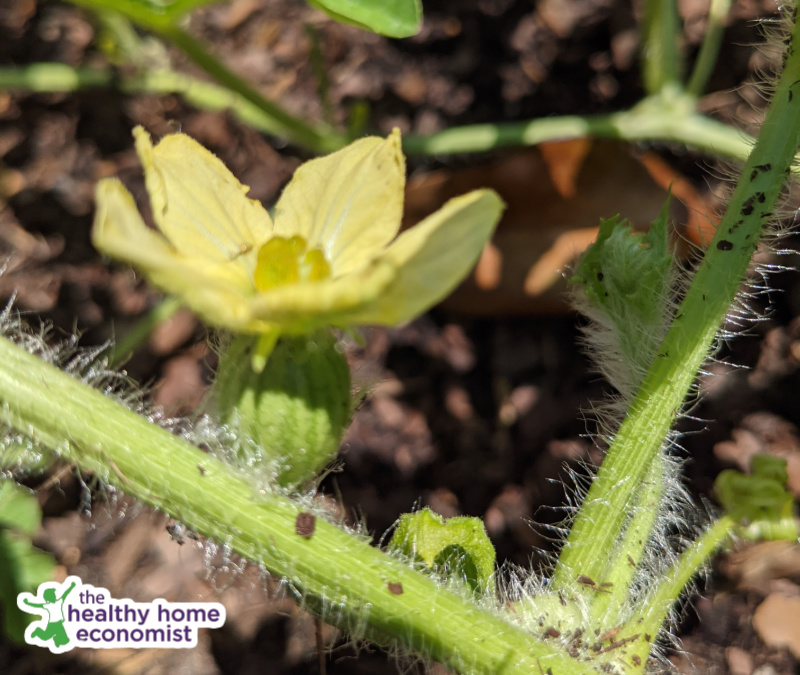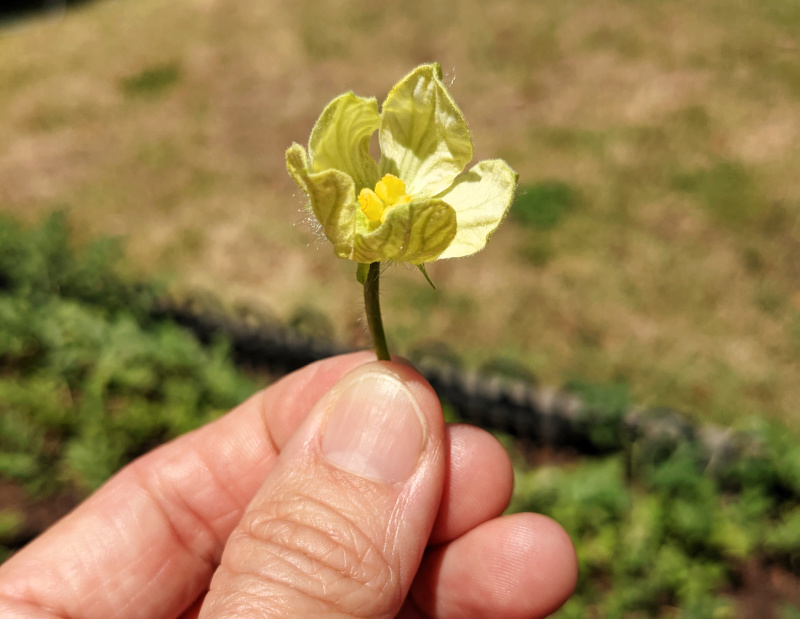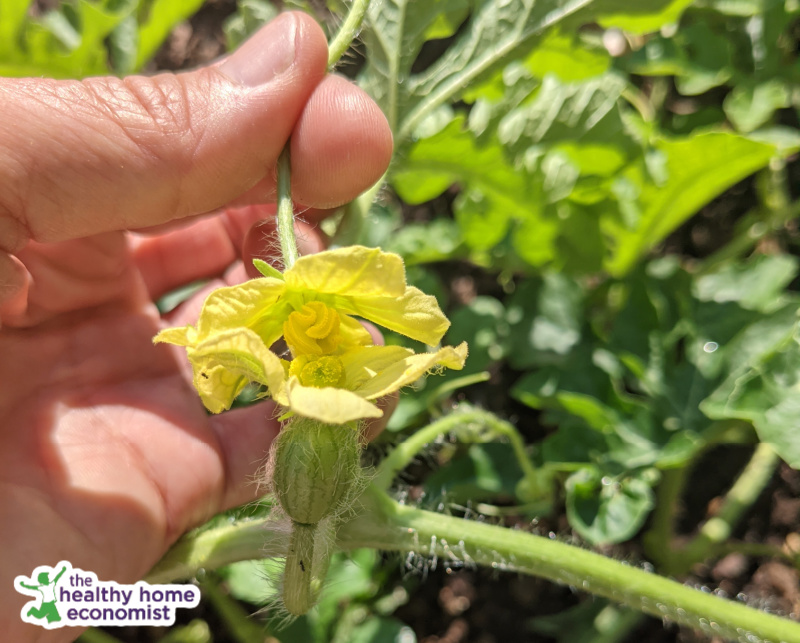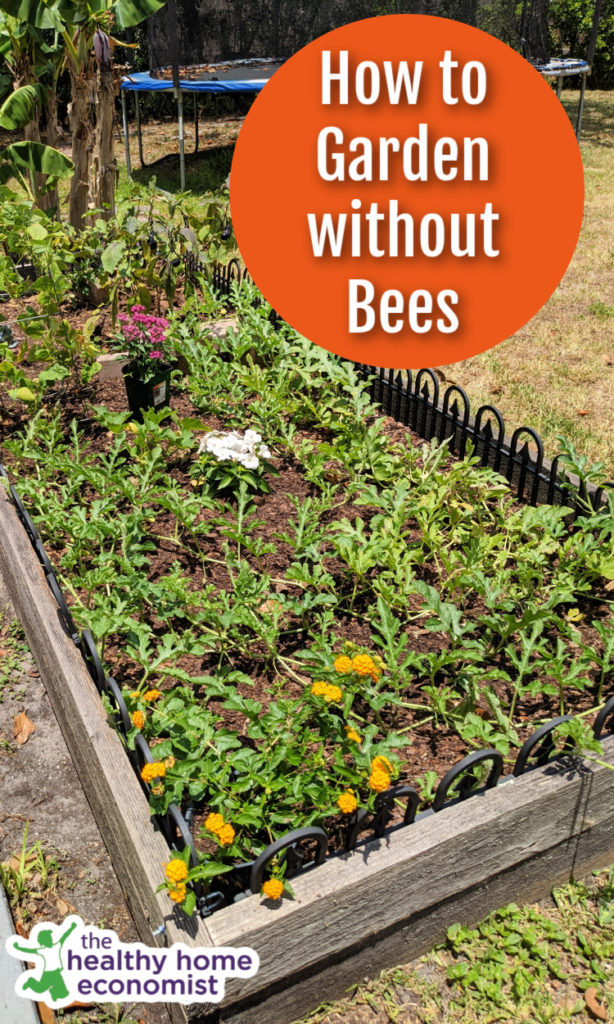Table of Contents[Hide][Show]
How to successfully garden and grow plenty of fruits and vegetables even in an area with few bees or other types of natural pollinators.

If you live in an area where a lot of pesticides and herbicides are sprayed, you will likely notice that there aren’t many bees around to pollinate your garden. This can occur even if you take the time to cultivate organically yourself.
While this is obviously a very concerning sign, you can still have a bumper crop of vegetables in your garden if you know how to compensate!
Decline of Bees Negatively Affects Home Gardens
I first noticed a decline in the bees in our area last year when a neighbor friend started complaining about how his zucchini plants were producing very little fruit. This man is no novice either. He is an expert gardener with a large cultivated plot that typically produces an overabundance of vegetables year in and year out.
I found this development odd because hardly anyone on our semi-rural street sprays chemicals.
After thinking about it for a bit, however, I realized that a couple of miles away, a large block of new apartment homes was recently constructed. These “maintenance-free living” style developments spray a lot of chemicals, which could have certainly adversely affected bee activity miles away.
On any given day, bees can travel up to 5 miles from their hive. So, if you have any sort of residential development or commercial agriculture that uses chemicals within that distance of your home, chances are that you’ve seen a decline in bee activity over the years.
Successful Gardening without Bees
The worrisome reduction in bee activity in my area caused me to figure out how to garden successfully anyway. It’s certainly not quite as easy and takes a bit of planning to figure out.
But, gardening without bees around definitely can be done. Here are four strategies to consider.
Plant Flowers that Attract Bees
If your problem is bees that are few and far between rather than a complete lack of them, then the easiest solution is to plant flowers in and around your vegetable garden that will have them making a beeline ☺️ to your garden.
But, not just any flowers!
Flower Color Matters
Bees definitely prefer flowers of a certain color over others.
Choose those that produce an abundance of blooms that are white, yellow, blue, or purple to attract the most buzzing friends. A mix of these colors is even better.
Reds and pinks are the least effective in my experience.
Where to Plant?
I like to plant bee attracting flowers in the middle and at the edges of my garden.
If you have a porch or patio nearby and wish to put them in window boxes for decorative purposes, that works too.
Try different locations to figure out what works best.
Relocate Insect Traps
If you use insect or mosquito traps around your property (we use these), then be sure to keep them as far away from your garden as possible.
While these types of devices don’t harm bees and butterflies, they DO harm moths, which are powerful garden pollinators too.
Strategic placement is key! For example, I suggest placing them on the front of the house only if you have a backyard garden.
If your garden is right near an outside sitting area, then I suggest turning a nearby trap off when you go to bed, since moth activity is highest during the night.
Grow Self-Pollinating Plants
If you are new to gardening, you might not realize that some plants are able to pollinate themselves. Thus, a lack of bees in the area makes no difference to productivity.
What this really means is that each flower has all of the sexual parts it needs to make a fruit.
My favorite vegetables to consider that grow fabulously well with no insect pollinators include the following:
- Eggplant
- Pole beans
- Peppers
- Beans and peas
Note that some plant cultivars can have hermaphrodite, self pollinating flowers OR male and female blooms.
For example, the papaya trees sold at the nurseries in my area are self-pollinating. In other words, you only need one tree to produce fruit and no bees are necessary.
However, if you grow papaya yourself from seed, the tree will be either male or female. So, you will need multiple trees with at least one female and one male (or hermaphrodite) to grow fruit. (1)
Moreover, you will have to hand pollinate them if you don’t have many bees to help out. This is easy to do and described below.
Hand Pollinate Your Garden
When all else fails, know that hand pollination works very well. In other words, YOU can do the work of bees and other insects in your garden with just a few minutes of effort.
The list of popular vegetables and fruits below requires insect pollinators. Hence, if you want to grow them and there aren’t many bees in your area, plan to do it yourself.
- Watermelon
- Zucchini or other squash
- Pumpkins
- Cucumbers
- Blueberries
- Raspberries
- Blackberries
Identify Male vs Female Flowers
The first step to hand pollinating is to learn to identify male vs female flowers.
Male flowers have lots of pollen inside them and are attached to a thin stalk.
Female flowers have a small version of the vegetable or fruit underneath them. (2)
See the picture above of a female watermelon flower. Beneath the bell of the bloom is a tiny little watermelon!
Compare that to the picture of a male watermelon bloom below that has only a skinny stalk beneath the bell.

Remove Pollen from Male Bloom and Apply to Female
Once you’ve identified male flowers, you need to remove the pollen from inside a few of them. Do this in the early morning before the sun gets high and the blooms start to close.
How many male flowers to use? I would suggest noticing the ratio of male to female flowers on each plant. For example, if there are about 4 male flowers for each female flower, a good rule of thumb is to pollinate each female flower with the pollen of four male flowers.
Cotton Swabs or Paintbrush
You can use a cotton swab or a tiny paintbrush to do this. Gently wipe the inside of each male flower. Use a fresh end of a cotton swab or paintbrush for each bloom.
Then, very lightly touch all around the inside cusp of the female flower with the collected pollen of each male flower. (3)
Flower to Flower Approach
Another method (the one I prefer), is to gently remove the male flowers you intend to use.
Then, turn the male bloom upside down over the top of the female flower and very lightly rub the inside of the two flowers together. Discard or compost the male flowers once you’ve applied their pollen to a female in this manner.
This method has the advantage of preventing you from accidentally reusing male flowers that no longer have any pollen. It is also the “no waste” approach to hand pollination. See the picture below for a visual view.

Do you garden in an area with few insect pollinators to assist the process? What tips or tricks can you share on how to be successful anyway?

(1) Why Some Papaya Fail to Fruit
(2) How to Identify Male versus Female Flowers
(3) How to Hand Pollinate Watermelon Flowers








Hm! Maybe that is why my zucchini only make flowers and no zucs! Thanks for the informative article. I never thought of helping with the pollinating and I do love the bee flowers idea!
Yes, that is almost certainly why.